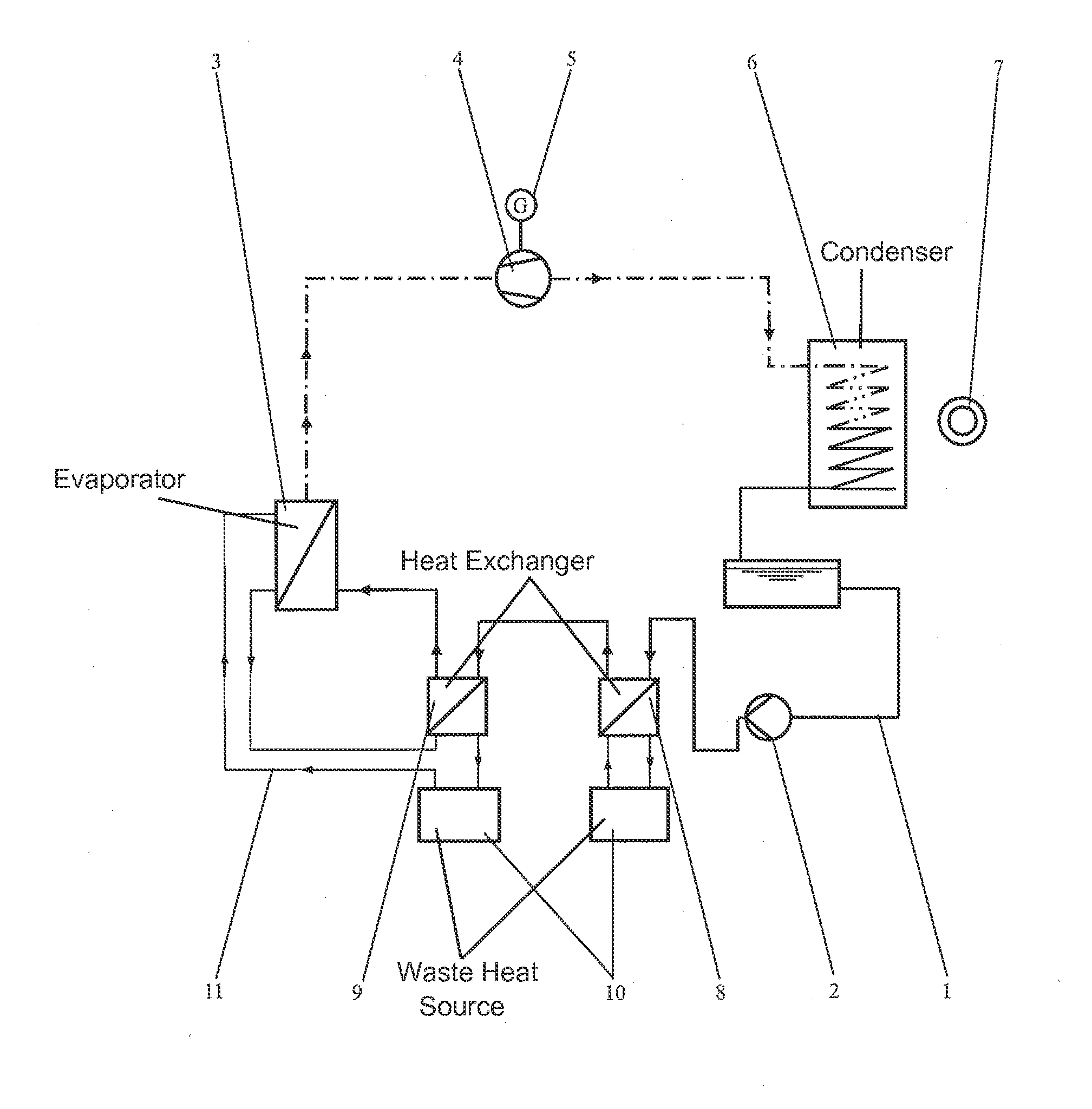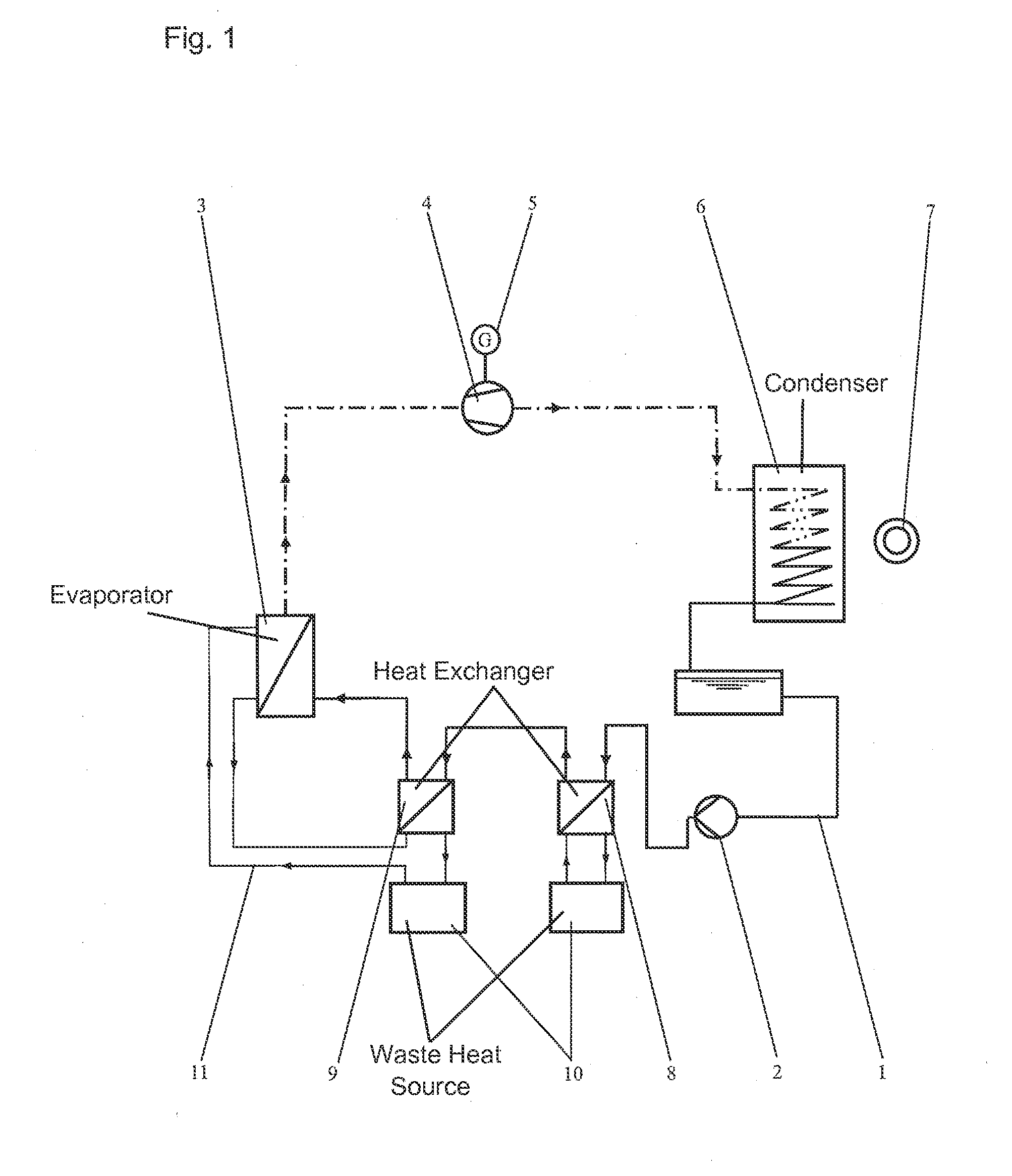Waste-heat recovery system
a technology of waste heat and recovery system, which is applied in the direction of liquid degasification, electric generator control, separation process, etc., can solve the problems of low temperature level heat, frequent inability to use heat having a low temperature level, and poor charge of the cylinder otherwis
- Summary
- Abstract
- Description
- Claims
- Application Information
AI Technical Summary
Benefits of technology
Problems solved by technology
Method used
Image
Examples
Embodiment Construction
[0021]The components that operate the ORC are an ORC circulation circuit 1, a feeding pump 2, an evaporator 3, an expansion machine 4 for vapor expansion, which is coupled to a generator 5, a condenser 6 for recooling via a heat sink 7, and heat exchangers 8, 9 for preheating the working medium in ORC circulation system 1.
[0022]The two heat exchangers 8, 9 are connected in series downstream from feeding pump 2. First heat exchanger 8 downstream from feeding pump 2 is used as the first stage for incoupling of the low-temperature heat, and following heat exchanger 9 is used as a second stage for incoupling of the high-temperature heat from a waste-heat source 10.
[0023]A second heating circuit 11, via its supply region, is connected to evaporator 3 of the ORC, because the temperature level is initially sufficiently high for its direct heating. After that, second heating circuit 11 discharges into second heat exchanger 9 on the return side, where it releases still existing residual heat...
PUM
| Property | Measurement | Unit |
|---|---|---|
| temperature | aaaaa | aaaaa |
| temperature | aaaaa | aaaaa |
| electric energy | aaaaa | aaaaa |
Abstract
Description
Claims
Application Information
 Login to View More
Login to View More - R&D
- Intellectual Property
- Life Sciences
- Materials
- Tech Scout
- Unparalleled Data Quality
- Higher Quality Content
- 60% Fewer Hallucinations
Browse by: Latest US Patents, China's latest patents, Technical Efficacy Thesaurus, Application Domain, Technology Topic, Popular Technical Reports.
© 2025 PatSnap. All rights reserved.Legal|Privacy policy|Modern Slavery Act Transparency Statement|Sitemap|About US| Contact US: help@patsnap.com


